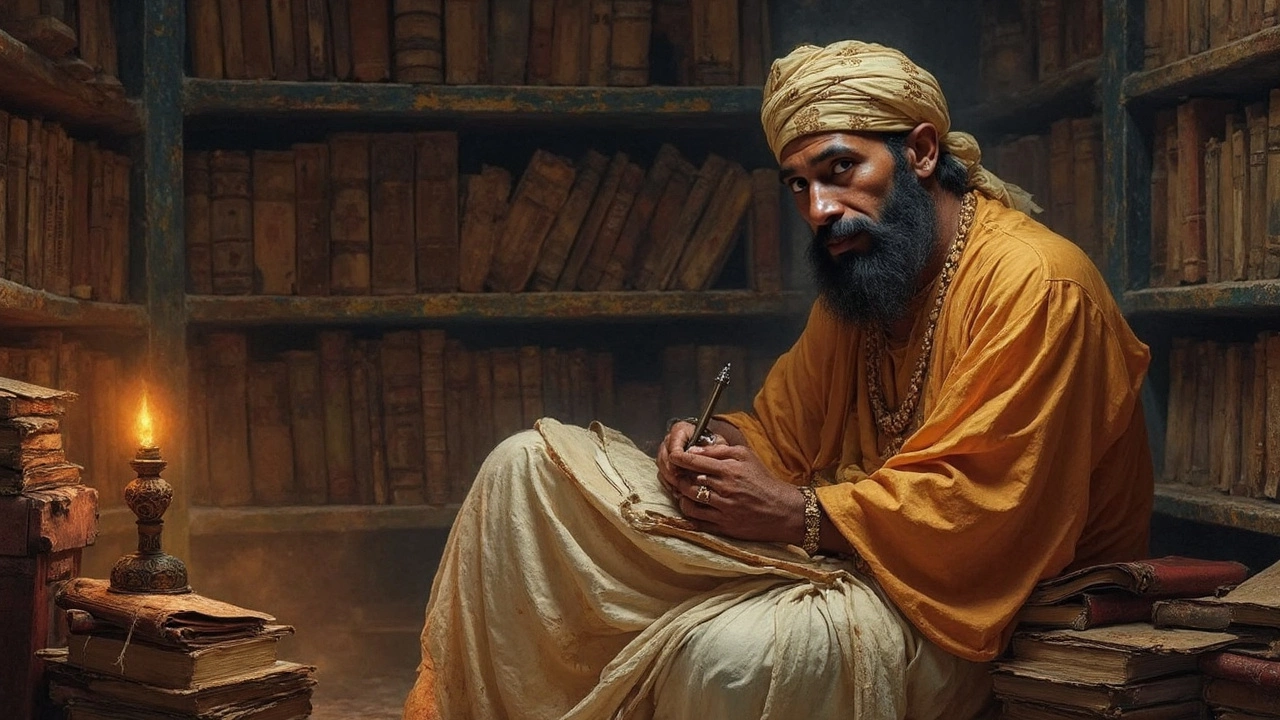Ever wondered why certain quotes stay with us long after we've heard them? There's that special mix of beauty and heartbreak that makes them unforgettable. In Indian poetry, this blend is like a fine art, capturing emotions that feel both personal and universal.
You'll find that Indian poets have a unique way of pouring their souls into their verses. It's not just about telling a story; it's about making you feel it, deeply. We all have those moments when a line just hits us right in the feels, sparking memories or stirring emotions we didn't even know were simmering inside.
In this article, we'll dive into what makes a heartbreaking quote truly remarkable. From understanding its impact to exploring the works of legends, we're on a journey to discover how these words touch our hearts and why they linger on in our minds. The cultural weave of India plays a huge role in shaping these expressions, adding layers of meaning that resonate even more.
- Understanding Heartbreaking Quotes
- Famous Indian Poets and Their Works
- Cultural Influences in Sad Poetry
- The Anatomy of a Powerful Quote
- Connecting with Emotion: Why It Matters
Understanding Heartbreaking Quotes
Why do some quotes have that gut-punch effect, leaving an imprint on our hearts? The art of a heartbreaking quote lies in its simplicity paired with deep emotional resonance. These lines often capture profound truths about life, love, and loss—things we all experience at some point.
In the realm of sad poetry, particularly in India, it's all about the ability to condense complex emotions into something that's both beautiful and devastating. This isn't just throwing words together for the sake of drama. It's about striking a balance between what is said and the feelings it evokes.
Interestingly, the power of a quote is often in its relatability. It acts as a mirror reflecting our own emotional landscapes. You know those lines that you read and think, 'Yes, that's exactly how I feel'? That's the magic they're pulling off. It's no wonder these quotes find their way into greeting cards, speeches, and personal diaries alike.
Ask yourself, how often have you connected with a quote because it effortlessly put into words something you've been unable to express? Indian poets like Mirza Ghalib or Rabindranath Tagore have this knack for capturing universal emotions, making their work timeless.
Let's break it down: a heartbreaking quote often centers around themes like unattainable love, regret, solitude, or hope. It uses vivid imagery and metaphors, yet it leaves enough room for you to fill in your own experiences. The result is a deeply personal connection between the poet's words and the reader's heart.
For a little extra perspective, take a look at this analysis of commonly found themes in popular Indian sad poetry:
| Theme | Description |
|---|---|
| Unattainable Love | Explores desires or relationships that are beyond reach or understanding. |
| Regret | Touches on the past and the longing for different choices. |
| Solitude | Focuses on the feelings of being alone, even when surrounded by others. |
| Hope | Provides a glimmer of optimism amidst sorrow. |
Understanding the depth and craft of these quotes makes us appreciate the real impact they have on our lives. Next time you read a line that makes your heart ache a little, think about the layers that make it so poignant.
Famous Indian Poets and Their Works
If you're diving into the world of **sad poetry**, especially from India, you can't skip over some of the legends who penned the most moving lines out there. Their works capture the depth of human emotion with a touch of cultural richness, making them truly timeless.
Let's start with Rabindranath Tagore, a magician with words. His poetry often strikes a balance between beauty and sorrow, reflecting on life's inevitable sadness. In 'Gitanjali,' Tagore’s words are a soothing balm yet emotionally stirring, managing to touch on topics like longing and existential questions.
Then there's Mirza Ghalib, a poet whose verses are nothing less than emotional art. Though he wrote in the 19th century, Ghalib’s strong yet heart-wrenching lines about love and loss resonate today. His ghazals are a window into his complex world of unfulfilled desires and philosophical contemplation.
Another name that can't be left out is Kamala Das. Her raw and honest expressions in poems such as 'An Introduction' bring out the pain and struggle of personal identity and unspoken desires. Her works are bold, adding a modern twist to traditional themes.
Don't forget Gulzar, a contemporary poet who threads gentle melancholy through his lyrics and poems. His ability to find beauty in everyday sadness makes his work relatable yet profound.
These poets have not just written words but have created experiences. Their poems have the power to make us feel accompanied in moments of sorrow, helping us realize that we're part of a larger human story.

Cultural Influences in Sad Poetry
India's rich tapestry of cultures and traditions plays a massive role in shaping its sad poetry. The sheer diversity of languages, customs, and historical events provides a backdrop that adds depth to every line written by Indian poets.
One significant factor influencing Indian poetry is its spiritual heritage. Concepts like love, life, and death are often explored through a lens steeped in spirituality and philosophy. Hinduism, Buddhism, and other religions have left their imprint, making sadness not just bearable but often seen as an integral path to self-awareness.
Another influence is the social and political history of India. From colonial struggles to the fight for independence, Indian poets have long used poetry as a form of resistance and social commentary. This historical context allows poets to express a range of emotions, adding layers of meaning to their work.
Family and social relationships also find their way into sad poetry. The strong family ties and the importance placed on relationships often lead to poetry that explores themes of love, loss, and separation. These universal feelings are depicted through culturally specific situations, making the poetry relatable yet uniquely Indian.
Even movies, music, and traditional art forms like kathak dance have influenced poets. These cultural elements blend into the fabric of poetry, creating a powerful form of expression that resonates with readers on multiple levels.
Finally, language plays a crucial part. With over 20 officially recognized languages, India's linguistic diversity allows poets to craft expressions in ways that best suit their emotions and narratives. Words in Hindi might convey emotions differently than those in Tamil or Bengali, offering a unique insight into the culture behind each piece.
This intersection of culture and poetry makes Indian sad poetry a compelling read. It's not just words on paper but a window into the soul of a diverse nation and its people.
The Anatomy of a Powerful Quote
So, what exactly makes a quote powerful enough to be dubbed both beautiful and heartbreaking? It’s not just a matter of stringing together sad words. It’s about striking the perfect balance between emotion, simplicity, and universality.
First, let's talk about emotion. A truly memorable quote has a way of cutting through the noise and tugging at our heartstrings. Think about the works of Rumi or Rabindranath Tagore—masters of sad poetry from India who capture profound feelings with just a few lines. They often draw from personal sorrow or universal themes of love and loss, making their words relatable and deeply impactful.
Next, we have simplicity. While complex language can be beautiful, the most striking quotes are often the simplest. They use everyday words to convey deep meanings. By doing so, they ensure that their message isn’t lost, even when read by someone half a world away.
Then there’s universality. A quote becomes truly powerful when it taps into feelings that we all share, regardless of our background. This is where Indian culture plays a huge role. Its poetry often reflects shared human experiences like longing and heartache, which cross geographical and cultural borders.
Think of it like crafting an emotional cocktail. Each component plays a part, but mixed together in just the right way, they create something unforgettable. A well-crafted quote makes you pause, reflect, and often return to it. That’s the magic behind a heartbreaking quote.
To sum it up, an impactful quote thrives on its ability to connect, be concise, and resonate universally. The poets who master this not only express their own truths but echo ours too. And that, more than anything, is what keeps these quotes alive in our hearts and minds.

Connecting with Emotion: Why It Matters
So why does connecting with emotion really matter in poetry? It’s simple. Our hearts respond to words that touch on feelings we've personally experienced. This connection is what makes sad poetry so relatable and impactful. When a poem captures a sentiment like heartbreak, it feels intensely personal, like it’s speaking directly to you.
"Poetry is when an emotion has found its thought and the thought has found words." - Robert Frost
Indian poetry is especially rich in emotional depth due to its long history and cultural narratives. The country's history of both joyous celebrations and deep struggles gives poets a wide palette of human experiences to draw from. And let’s face it, India has seen its fair share of inspiring yet heart-wrenching stories.
When these emotions are expressed through words, they help people from all walks of life understand and process their own feelings. That's why a single line of heartbreaking quotes can sometimes convey more than a whole novel. It cuts to the core, bypassing the need for elaborate descriptions.
Moreover, studies even suggest that engaging with emotional literature can improve empathy and emotional intelligence. So it's not just about reading for pleasure or to feel a connection; it's about personal growth too. It's these layers of meaning that give an emotionally charged quote its lasting power.
Poetry ultimately helps us see the world from different perspectives, allowing us to understand struggles and triumphs not just as experienced by others, but as shared human experiences. That’s why it matters.
